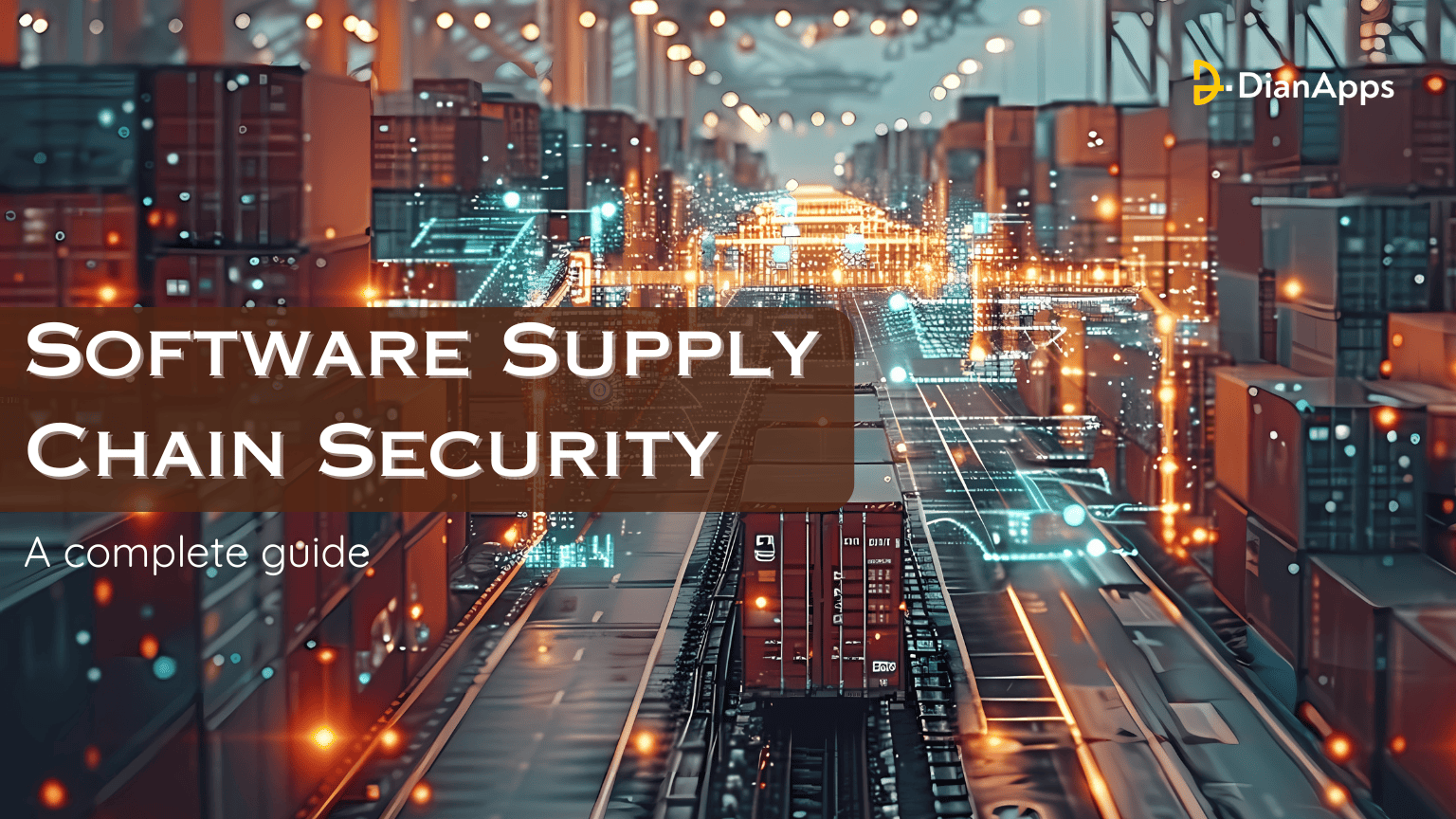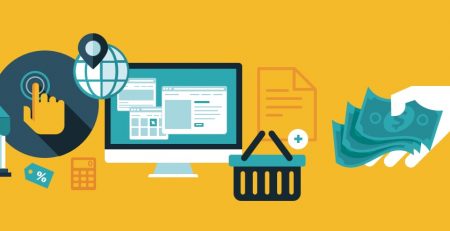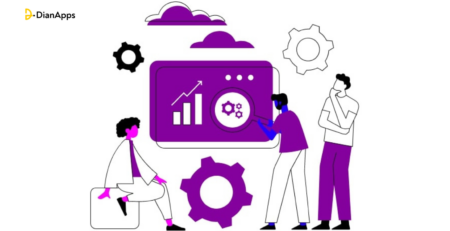A Complete Guide to Software Supply Chain Security
Security always remains the major concern of businesses, regardless of size and target market. Today, more than half of businesses are using mobile apps to maximize operational efficiency and reach potential customers.
Not only this, but more than 78% of businesses that do have mobile apps are planning to build one shortly. The rise in mobile app use has increased businesses’ dependence on IT infrastructure to deliver services and products, gain insights, and manage operations.
Once the software is attacked with data breaches, it leads to a significant issue for both businesses and customers. In 2023, the data breach cost was at an all-time high of US$4.45 million.
Supply chain security of the software also remains a critical concern, as it takes 9% longer time to identify the issue, which leads to a higher average cost of US$4.63 million. According to research results, supply chain attacks have increased by 74.2% annually over the past few years.
It’s no surprise that 76% of CEOs say that protecting their partner ecosystem and supply chain is just as important as building their organization’s cyber defense. This blog provides an understanding of the software supply chains and their attacks. However, if you want to build highly secure software, ensure to get in touch with an expert custom software development company.
Understanding Software Supply Chains
The Software Supply Chain refers to the process by which software is developed, deployed, and maintained. This process includes all the essential aspects that impact software development during its life cycle. Furthermore, this ecosystem covers all aspects required to build software artifacts from source code development to production deployment. This process includes the following key elements, given below:
- Build and Packaging Processes.
- Monitoring and Maintenance Procedures
- Source Code Writing and Management
- Deployment Infrastructure and Environments
- Third-Party Software Dependencies and Libraries
- Distribution Channels and Mechanisms
In this digitally enhanced environment, it has become difficult for companies to build software with the help of an in-house development team. Instead, most of them rely on a different range of building blocks, such as developer tools, cloud-based deployment, open-source libraries, software-as-a-service, and a range of other building blocks.
Each of the practices discussed above is a part of the long supply chain, which includes every aspect of IT infrastructure, such as source code, hardware, platforms, third-party tools, data storage, and testing and distribution infrastructure.
Whether you are a developer or a business owner, you definitely want to leverage open-source libraries and components. These libraries save us time, accelerate development, and enable us to deliver more functionality to our customers. Furthermore, open-source components also come with several data breaches. That’s why it is important to ensure the security of our software supply chain.
Most Common Vulnerabilities of the Software Supply Chain
Here, you will come across the five most common vulnerabilities in the software supply chain:
Open-Source Libraries:
Most businesses look for a cost-friendly solution, and in response to that, they tend to use open-source components containing known vulnerabilities.
Secrets Lead:
Code repositories are not trustworthy, as they sometimes expose sensitive information such as API keys and passwords, facilitating attacks.
The CI/CD Pipeline:
Various unsecured software development pipelines are majorly vulnerable to attacks and exposed to data leakage and malicious injections. Excessive contributors and un-sanitized metadata privileges increase the risk.
Malicious Packages in Public Registries:
Some unsecured software allows attackers to upload legitimate-looking malicious packages to popular public registries like NPM and PyPI.
Malicious Installation Scripts:
Installation packages for genuine applications can contain malicious code. These are carried out during installation, which compromises systems and may provide attackers with more resources to carry out extra attacks.
Recommended Read: Security Best Practices: Protect Your App Against Critical Risks
How to Secure Your Business from Software Supply Chain Attacks
Based on the research report of 2023-24, supply chain and third-party risks accounted for 15% of breaches, with a 68% year-on-year increase in the risk. There are various practices to save your business from multiple supply chain attacks. Read further to understand all of them:
Vulnerability and Patch Management:
This process starts with identifying, patching, and prioritizing known vulnerabilities, not only in already-deployed software, but the vulnerabilities must be checked throughout the build software to prevent a vulnerability from becoming an issue in the early stage.
If the software is already deployed, understand that even a critical vulnerability will not affect the software much if identified in the early phase as a medium-grade vulnerability on a widely used application.
Third-Party Risk Assessment
Third-party risk in software development has become so popular that even a Data Breach Investigation Report (DBIR) of 2024 has redefined the concept of third-party breaches to include vulnerabilities in third-party or partner software.
In this technological market, it has become so convenient for software developers and application users to adopt a proactive approach to gaining complete insights into third-party dependencies in their development and codebase environments.
Supply chain security practices help software developers implement secure design practices, in addition to frameworks such as the NIST Cybersecurity Framework (CSF) or ISO 27001.
Recommended Read: AI Cybersecurity Solutions: Identify Its Importance and Applications
Implement Secure Software Development Practices
Ensure the integration of software security practices from the beginning of the software development cycle (SDC), from design to the development phase. There should be a secure coding practice where code meets defined requirements and standards. By ensuring that vendors also adopt these standards, it has reduced the chances of risk.
Software Composition Analysis (SCA)
Software composition analysis tools are considered another best practice that enhances AppSec and mitigates software supply chain risk by auditing code, recommending patches, and including third-party components.
SCA also provides innovative compliance codes and facilitates software fixes during development.
Software Bills of Materials (SBOM)
A SBOM is considered the list of components and relationships between components that make up a software application. It is further used for multiple purposes, such as fulfilling regulatory requirements, satisfying customer requests brought on by the Biden Administration’s executive order, and supporting open-source license compliance. Another major use case of the list of components is software supply chain security.
Modern applications are developed using several individual software components that make it difficult for companies to identify supply chain issues. This is where SBOM plays an important role in giving organizations the information they need to mitigate risk.
There are various benefits of SBOM in both cases, while producing and consuming SBOMs:
Producing SBOMs
- SBOMs make it easier for organizations to monitor components in their applications for vulnerabilities.
- It allows the development of approved and non-approved lists for software components.
- It also allows businesses to replace or identify components nearing end-of-life.
- Identifying and reviewing code saves engineering and security teams time.
Consuming SBOMs
- Provides for the prompt assessment of whether newly disclosed vulnerabilities affect an organization.
- It helps teams deal with potential problems proactively caused by end-of-life components.
- It helps ensure that an organization’s risk position is accurately assessed and enables more informed risk mitigation
Software Supply Chain Security Checklist
Source Code Security
- Ensure that automated secrets detection is in place
- Standardized code approvals and reviews
- Ensure that access control measures are in place for source code repositories
Dependencies Management
- Make sure to identify all the third-party dependencies used in the software.
- Always maintain a list of unapproved and approved dependencies
- Regularly update and monitor dependencies to ensure that they are not vulnerable to known security issues.
Build and Packaging
- Have a documented build Process that includes all necessary components, including libraries, tools, and source code.
- Ensure the integrity of the software package by using cryptographic signatures.
- Make sure that only authorized personnel have access to the built environment.
Distribution
- For distributing packages, use secure channels.
- Verify the integrity of the software package before distribution
- Sign the distributed software packages.
Deployment
- Software must be deployed in a secure environment
- Use strong authentication and access control measures for deployment.
- Ensure to regularly monitor the software in production for anomalies and vulnerabilities.
Incident Response
- In case of a security breach, have an incident response plan in place.
- Regularly test the incident response plan.
- On incident response procedures, provide training to personnel.
Compliance
- Make sure that all applicable laws and guidelines are followed by the software.
- Regularly examine and revise policies and processes related to compliance.
- Audit frequently to make sure compliance is maintained.
Software factories’ resilience is seriously threatened by attacks on the software supply chain. Even while it is impossible to completely stop supply chain attacks, you may limit the potential harm by putting some procedures in place that will make it harder for attackers to compromise your system.
Recommended Read: How To Get Accurate Software Testing Cost Estimation?
Final Words
Finally, we can say that for the effective functioning of the software and apps, it is important to follow the best security practices of supply chain software. Now, from the traditional testing process to automation, many changes have been made.
For example, now, rather than using security pros, businesses have started leveraging their own tools at the end of the development cycle. Security testing has been automated within the CI pipeline, with findings delivered to developers when they are still working with the code.
The team at DianApps is highly focused on enabling and managing security and compliance guidelines of the businesses that allow developers to run efficient and fast code. There are some software supply chain security tools, such as incorporating SLSA principles, ensuring they have an SBOM, and engaging with developers on security practices.
This blog has covered all the important aspects related to software supply chain security. By understanding the pointers shown here, you can easily strengthen your defense against supply chain attacks and bring a more secure software ecosystem.




